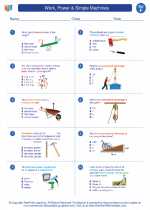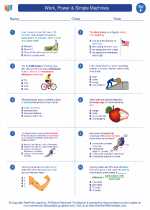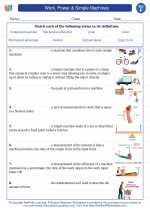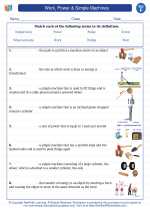Potential Energy
Potential energy is the energy that an object possesses due to its position or condition. It is the stored energy that can be converted into kinetic energy. There are several forms of potential energy, including gravitational potential energy, elastic potential energy, chemical potential energy, and electrical potential energy.
Gravitational Potential Energy
Gravitational potential energy is the energy an object possesses due to its position in a gravitational field. The gravitational potential energy (GPE) of an object depends on its mass, the acceleration due to gravity, and its height above a reference point. The formula to calculate gravitational potential energy is:
GPE = mgh
Where GPE is the gravitational potential energy, m is the mass of the object, g is the acceleration due to gravity, and h is the height of the object above the reference point.
Elastic Potential Energy
Elastic potential energy is the energy stored in an elastic object, such as a spring or rubber band, when it is stretched or compressed. The amount of elastic potential energy stored in an object depends on its spring constant and the distance it is stretched or compressed. The formula to calculate elastic potential energy is:
Elastic PE = 0.5 * k * x2
Where Elastic PE is the elastic potential energy, k is the spring constant, and x is the displacement from the equilibrium position.
Chemical Potential Energy
Chemical potential energy is the energy stored in the chemical bonds of a substance. When chemical reactions occur, this energy can be released. Examples of chemical potential energy include the energy stored in food, gasoline, and batteries.
Electrical Potential Energy
Electrical potential energy is the energy associated with the position of charged particles within an electric field. The amount of electrical potential energy depends on the amount of charge and the voltage. The formula to calculate electrical potential energy is:
Electrical PE = qV
Where Electrical PE is the electrical potential energy, q is the charge, and V is the voltage.
Study Guide
When studying potential energy, it is important to understand the different forms of potential energy and how they are calculated. Practice solving problems using the formulas for gravitational potential energy, elastic potential energy, and electrical potential energy. Additionally, explore real-world examples of potential energy and how it is converted into kinetic energy in various situations.
Remember to review the units of measurement for each form of potential energy and how they relate to the corresponding physical quantities.
.◂Science Worksheets and Study Guides Sixth Grade. Work, Power & Simple Machines

 Worksheet/Answer key
Worksheet/Answer key
 Worksheet/Answer key
Worksheet/Answer key
 Vocabulary/Answer key
Vocabulary/Answer key
 Vocabulary/Answer key
Vocabulary/Answer key
